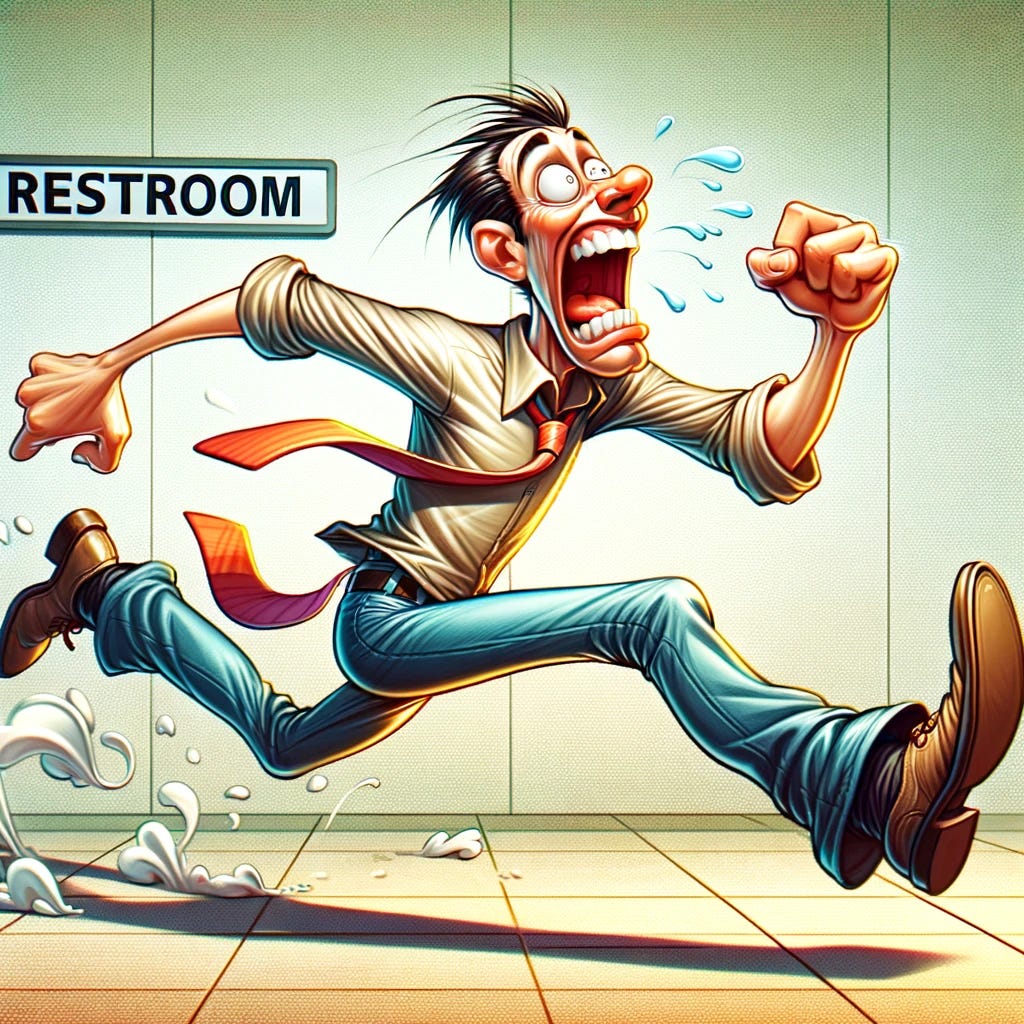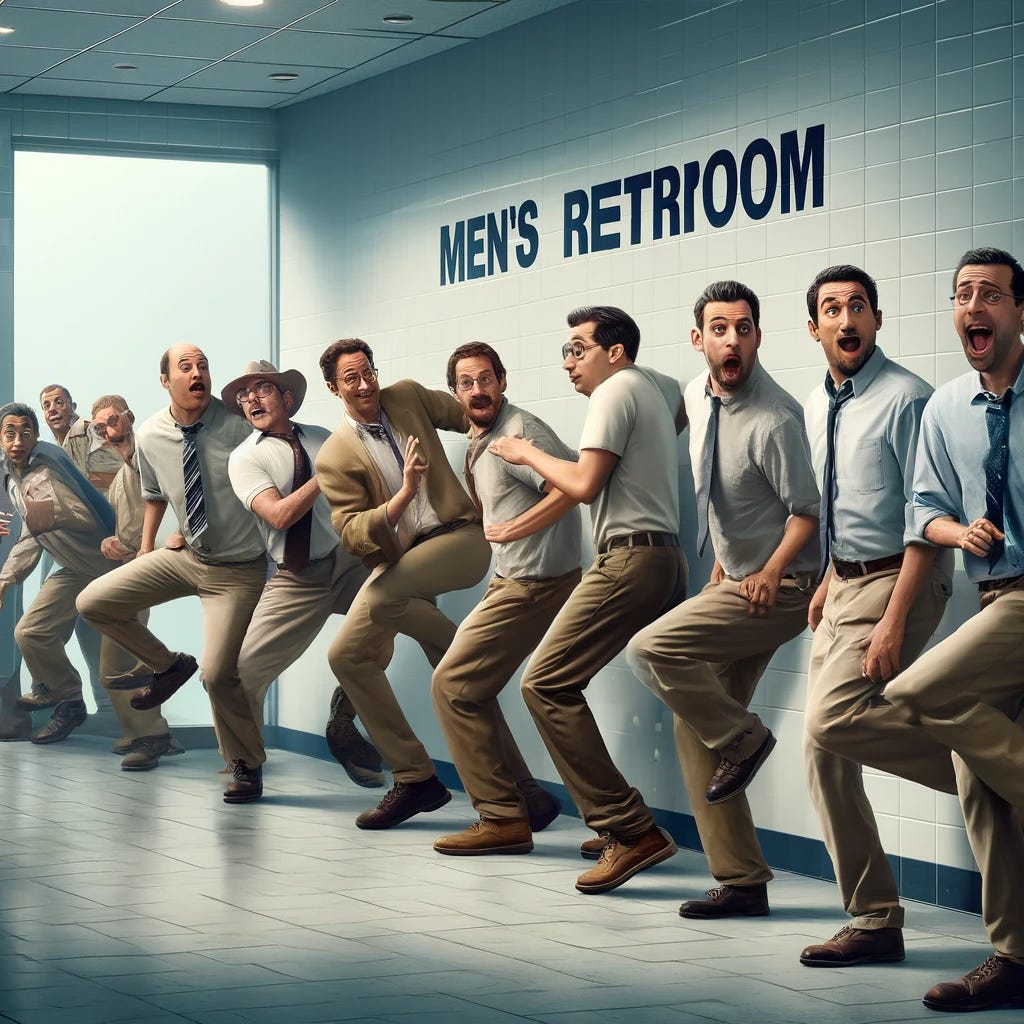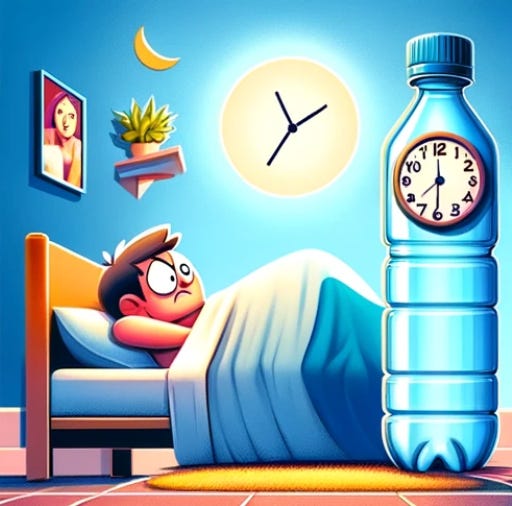BPH and the Washroom Waltz: A Performance of Splashes and Spurts
Let's start with the basics. What is Benign Prostatic Hyperplasia (BPH)? Put simply, it's a non-cancerous, non-life threatening enlargement of the prostate gland, which is situated just below the bladder and surrounds the urethra, the tube through which urine passes. As men age, the prostate tends to grow, leading to varying degrees of urinary symptoms.
Now, why should BPH matter to men? Well, for starters, it's incredibly common. By the age of 60, more than half of men will have some degree of BPH, and that number rises to about 90% by age 85. So, if you're a man over 50, chances are BPH might affect you at some point in your life.
But beyond its prevalence, BPH can significantly impact a man's quality of life. The symptoms can range from mild to severe and may include:
1. Frequent urination: You might find yourself needing to urinate more often, especially at night (a condition known as nocturia).
2. Urgency: The sudden, compelling need to urinate, which can be difficult to ignore.
3. Weak urine stream: You may experience a weak or interrupted urine stream, making it feel like it takes forever to empty your bladder.
4. Incomplete emptying: After urination, you might still feel like there's more urine left in your bladder.
5. Straining: Difficulty starting urination or having to strain to empty your bladder fully.
6. Urinary retention: In severe cases, BPH can lead to the inability to urinate at all, which requires immediate medical attention.
These symptoms can have a profound impact on daily life, affecting everything from sleep to productivity to overall well-being. Many men find themselves limiting their activities or avoiding social situations due to the fear of not being near a restroom.
Now, let's address a common misconception: BPH is not prostate cancer. While both involve the prostate gland, they are entirely different conditions. BPH is a benign (non-cancerous) enlargement of the prostate, whereas prostate cancer involves the abnormal growth of cells within the prostate gland. However, it's essential to note that the symptoms of BPH can sometimes mimic those of prostate cancer, so it's crucial to see a healthcare professional for an accurate diagnosis.
So, what can men do if they suspect they have BPH? The first step is to speak up and seek help. Many men feel embarrassed or ashamed to discuss urinary symptoms with their doctor, but I can't stress enough how important it is to have an open and honest conversation. Your doctor is there to help and has likely heard it all before.
During your appointment, your doctor will likely perform a physical examination and may recommend additional tests, such as a digital rectal exam (DRE), urine flow study, or ultrasound. These tests can help confirm the diagnosis and determine the severity of your symptoms.
Once diagnosed, there are several treatment options available for BPH, ranging from lifestyle changes to medications to surgical procedures. The appropriate treatment will depend on factors such as the severity of your symptoms, your overall health, and your personal preferences.
For mild to moderate symptoms, lifestyle modifications may be sufficient to alleviate discomfort. These may include:
- Limiting fluids before bedtime: To reduce nighttime urination.
- Avoiding caffeine and alcohol: Which can irritate the bladder and worsen symptoms.
- Maintaining a healthy weight: Excess weight can put added pressure on the bladder and exacerbate symptoms. Exercise at home or at work! Skip the Uber!
- Kegel exercises: These pelvic floor exercises can help strengthen the muscles that control urination.
If lifestyle changes aren't enough, your doctor may prescribe medications to help relax the muscles of the prostate and bladder, improve urine flow, or shrink the size of the prostate gland.
In more severe cases or when symptoms don't respond to other treatments, surgery may be necessary. There are several surgical options available for BPH, including transurethral resection of the prostate (TURP), laser therapy, and minimally invasive procedures.
During transurethral resection of the prostate (TURP), a surgeon inserts a thin tube with a camera and cutting tool through the urethra to remove excess prostate tissue, relieving urinary obstruction caused by benign prostatic hyperplasia (BPH).
Laser therapy for benign prostatic hyperplasia (BPH) involves using laser energy to vaporize or remove excess prostate tissue that is causing urinary symptoms, such as difficulty urinating or frequent urination.
This minimally invasive procedure aims to alleviate urinary obstruction and improve urinary flow without the need for traditional surgical incisions.
It's important to remember that BPH is a manageable condition, and there's no need to suffer in silence. By seeking help and exploring treatment options, men can regain control of their urinary health and improve their quality of life.
The reality is that benign prostatic hyperplasia (BPH) is a common condition that affects many men as they age. While it's not life-threatening, it can significantly impact quality of life if left untreated.
By understanding the symptoms of BPH, seeking help when needed, and exploring treatment options, men can take control of their urinary health and enjoy a better quality of life. Remember, there's no shame in talking about urinary symptoms with your doctor – it's a vital step toward finding relief.










